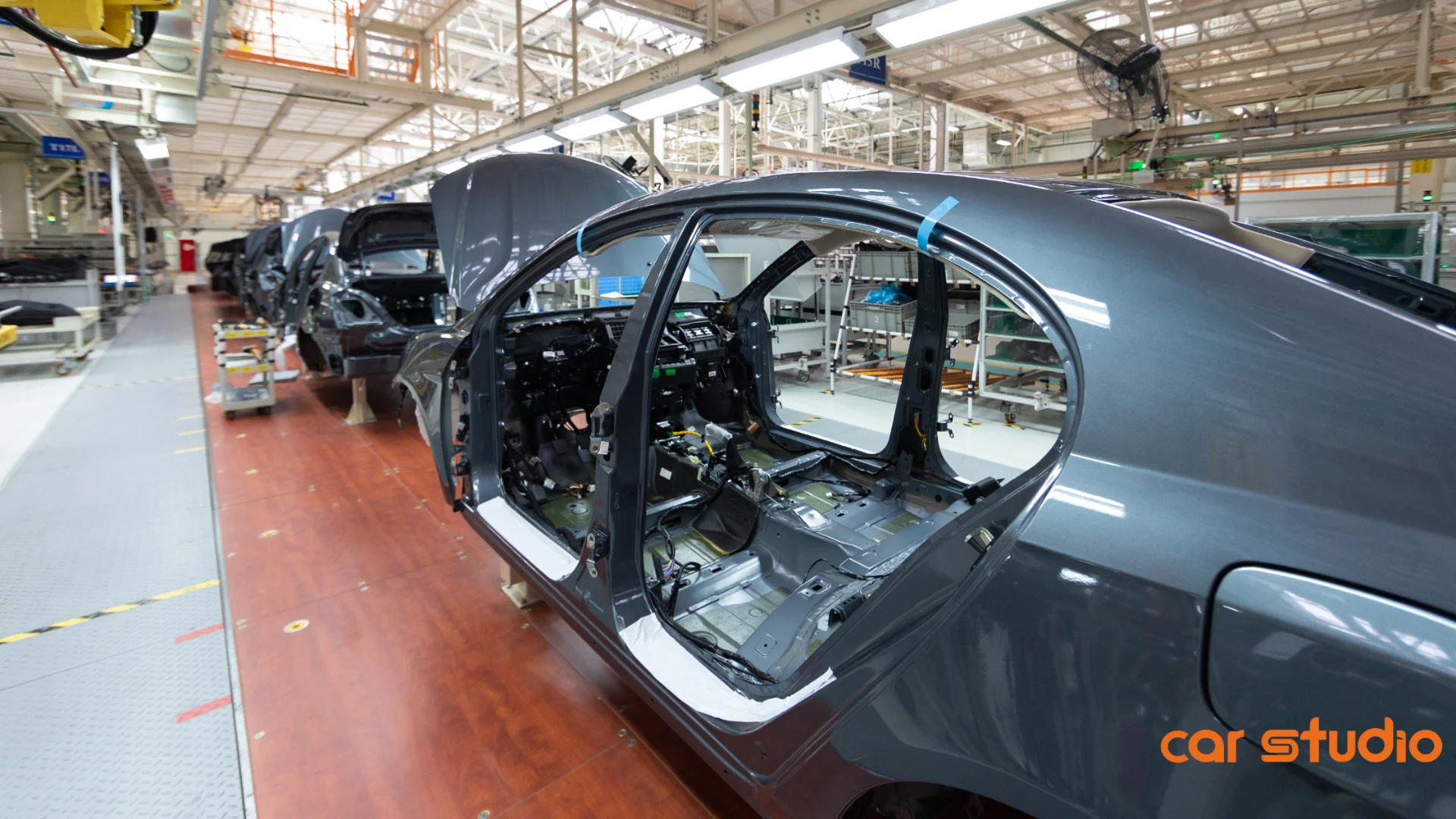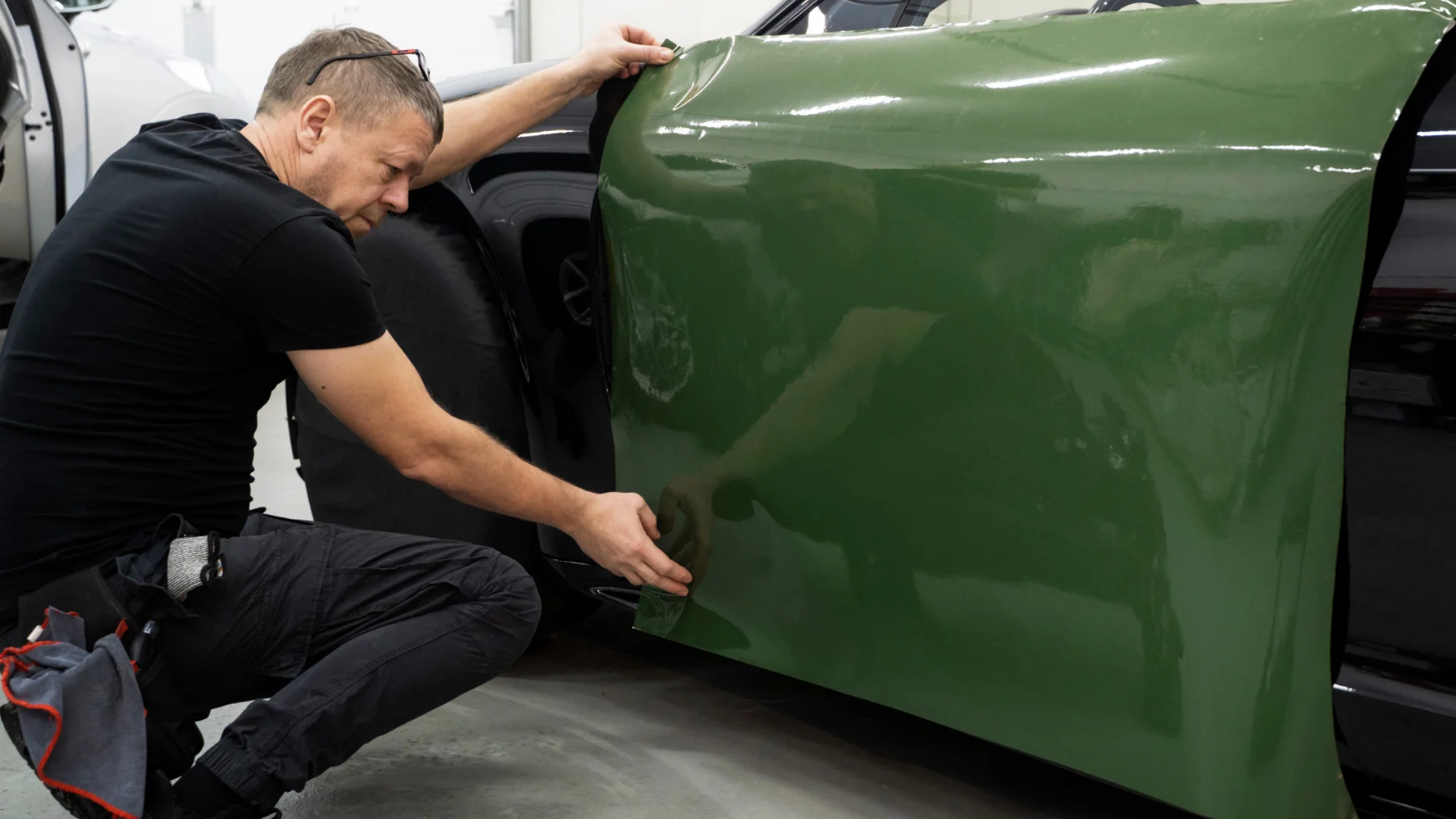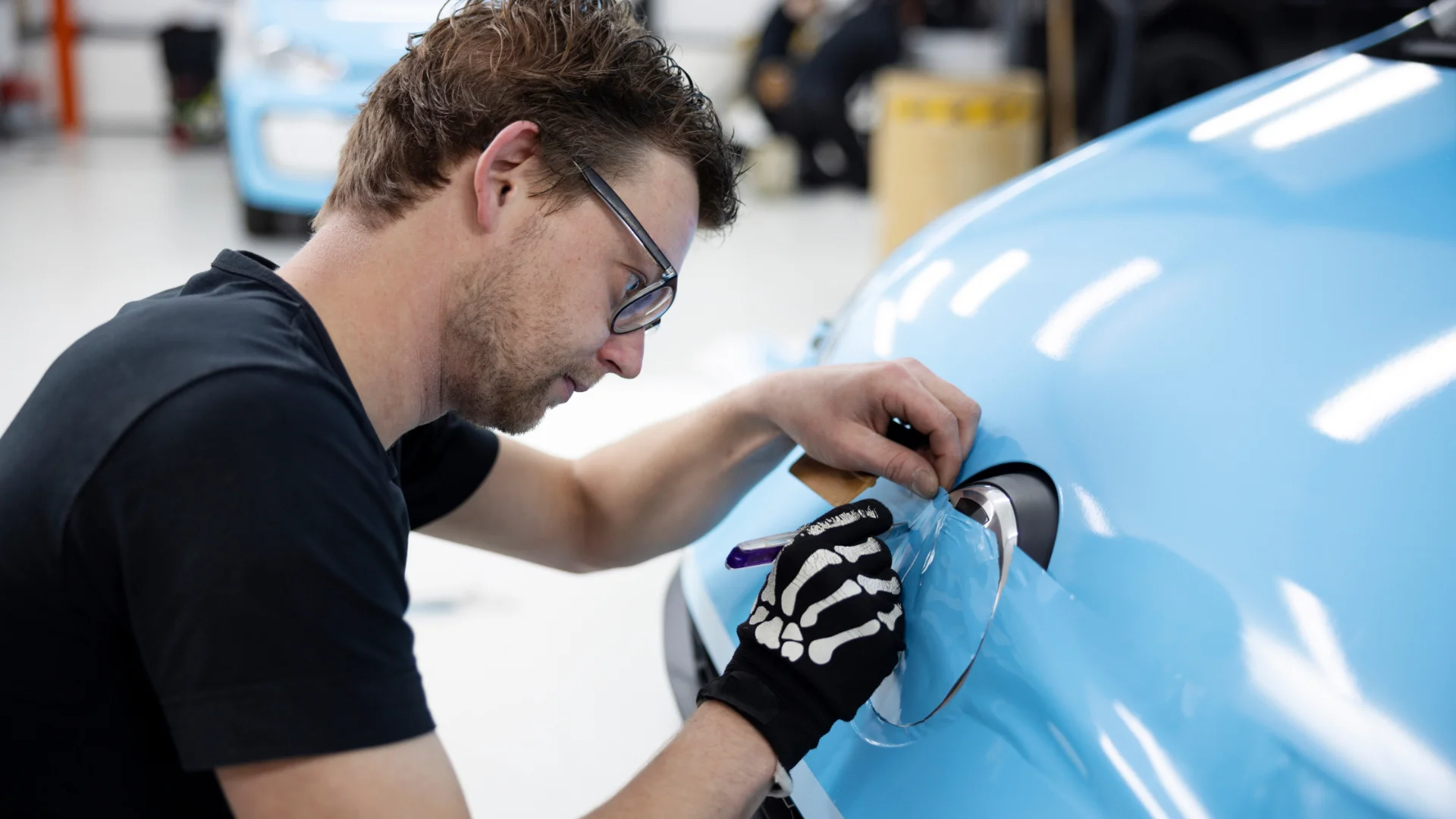
Scaling OEM Visual Identity: AI Car Imagery as a Branding Power Tool
Scaling OEM Visual Identity: AI Car Imagery as a Branding Power Tool
Introduction: The Visual Challenge in Automotive Marketing
Think about the last time you scrolled through car listings online. Maybe you weren’t even shopping seriously just curious. Still, something happened almost instantly: you stopped at the cars with photos that felt right. The lighting was consistent, the car looked sharp against a clean background, and the overall image carried a professional tone. Now compare that to the listings with cluttered parking lots, uneven colors, or mismatched image styles. Which ones gave you more confidence in the brand?
In today’s ultra-competitive automotive market, visuals are no longer a supporting element they are the brand message. For Original Equipment Manufacturers (OEMs), every photo is both a product showcase and a statement of identity. The stakes are high: buyers increasingly shop through digital showrooms, compare vehicles side by side, and make emotional judgments within seconds. And here’s the uncomfortable truth: even a brilliant vehicle design can lose its impact if the visuals are inconsistent or underwhelming.
This is where Artificial Intelligence steps in. AI-driven car imagery has evolved from being a futuristic experiment to becoming an essential marketing tool. What once required expensive studios, long lead times, and endless manual editing can now be achieved at scale — without sacrificing creativity or consistency. Companies like Car Studio AI are at the forefront, offering OEMs the ability to not only standardize their visuals but also to elevate them.
The challenge for OEMs is clear:
This article dives deep into how AI car imagery addresses these challenges. It isn’t just about technology it’s about brand survival and growth in a digital-first automotive market. We’ll explore why visual consistency matters, how AI imaging solutions work, and what strategies OEMs can use to turn car photos into branding power tools. Along the way, I’ll share both industry data and practical reflections from real OEM marketing scenarios.
The Power of Visual Consistency
Achieving Brand Recognition
Imagine walking into a luxury boutique. Every element the lighting, the colors, the way the products are displayed is designed to reinforce the brand’s identity. Now imagine if one corner of the store looked completely different: bright fluorescent lights, random posters, mismatched shelves. Even if the products were the same, your perception of the brand would immediately change.
This is exactly what happens when OEMs allow inconsistent visuals across their marketing channels. A car photographed in a cluttered dealership lot sends one message; the same model presented against a clean, branded backdrop sends another. For customers, the difference is not subtle it’s decisive.
Visual consistency creates instant brand recognition. When potential buyers see the same style of images on a manufacturer’s website, a dealership portal, and a social media ad, they subconsciously build trust. They know what to expect, and that familiarity reduces hesitation. In crowded digital marketplaces, recognition is the first step toward preference.
Enhancing Engagement and Click-Through Rates
Consistency isn’t just about aesthetics it’s about measurable outcomes. Studies in digital marketing consistently show that professional, high-quality images boost engagement. One report revealed that listings with standardized, visually appealing photos can increase click-through rates by up to 42%.
Why? Because visuals act as filters. When a customer scrolls through multiple car options, inconsistent or low-quality images create cognitive friction. They make the shopper pause, question, or worse skip. On the other hand, a consistent style makes browsing effortless. Each image becomes an invitation to explore further rather than a reason to hesitate.
Think of it this way: in the first 5 seconds of online car shopping, visuals aren’t just selling vehicles they’re selling attention. And attention is the gateway to conversion.
Streamlining Marketing Efforts
There’s also an operational advantage that’s often overlooked. Marketing teams at large OEMs face constant pressure: launching new models, adapting campaigns for regional markets, updating digital showrooms. Without a consistent visual foundation, this work becomes chaotic. Designers spend time fixing mismatched images, local teams improvise, and the overall brand message fragments.
By maintaining a central repository of AI-enhanced, brand-aligned images, OEMs simplify everything. New campaigns can be deployed faster. Dealerships can access ready-to-use visuals without additional editing. Global marketing teams can focus on storytelling rather than troubleshooting.
In short, visual consistency isn’t just about looking good it’s about working smart.
AI-Driven Imaging Solutions
If you ask most marketing teams what slows them down, you’ll hear the same answers: inconsistent photos from dealerships, endless retouching requests, and too many manual edits. What looks like a “small problem” a crooked angle here, a distracting background there quickly multiplies when you’re dealing with thousands of vehicles across hundreds of markets.
AI technology doesn’t just “fix” these issues; it redefines the workflow. Instead of treating imagery as a bottleneck, OEMs can now treat it as a scalable asset. Let’s break down how.

Background Removal and Enhancement
One of the most obvious but impactful applications of AI is background removal. At first glance, this might sound cosmetic, but it’s actually central to branding.
Take this scenario:
Individually, these photos might look fine. But when combined into a global campaign, the result feels messy. There’s no unified story.
AI solves this by replacing inconsistent or distracting backgrounds with clean, standardized settings whether that’s a neutral gradient, a branded environment, or even a virtual studio designed to match the OEM’s identity. The vehicle remains the star of the show, and the customer sees the car exactly as the brand intends.
And here’s the kicker: this doesn’t take days or weeks of manual Photoshop work. It happens instantly at scale.
Logo and Detail Integration
Another pain point for OEMs is maintaining accurate, consistent branding details. Logos on number plates, badges on wheels, or subtle design flourishes often get lost or distorted in the chaos of decentralized photography.
AI tools can now automate this with pixel-level precision:
This may sound small, but when multiplied across tens of thousands of images, the impact is enormous. Every photo becomes not just a product shot, but a brand reinforcement tool.
Compliance and Privacy
There’s also a compliance side to this that often flies under the radar. Privacy regulations like GDPR and KVKK are strict about personally identifiable details in images license plates, reflections, even stray people in the background.
AI steps in as a silent guardian here. By automatically detecting and blurring sensitive details, OEMs not only stay compliant but also avoid the reputational risk of a privacy slip. And unlike manual editing, AI doesn’t miss details it applies the same standard every time.
Scalability at Speed
Finally, scalability. Traditional workflows simply can’t keep up with the demands of global OEMs. When a new model launches, thousands of images need to be processed and distributed across dozens of countries in record time.
AI-driven systems are built for this. They can handle massive volumes of images without losing consistency. Whether it’s 100 or 100,000 photos, the output quality is identical clean, aligned with brand standards, and ready for deployment.
This is where AI becomes more than just an editing tool. It becomes an infrastructure for branding at scale.
Scaling at Speed: Meeting Global OEM Needs
When people talk about “scaling” in marketing, they often think about running more ads or increasing budgets. But for OEMs, scaling visual identity is something far more complex. It’s about making sure that a brand looks the same in Milan, São Paulo, and Shanghai even though each of those markets has different dealership networks, cultural aesthetics, and digital habits.
Without the right tools, this is nearly impossible. Human teams simply can’t process and unify the sheer volume of content required. That’s where AI steps in: not as a luxury, but as the only way to keep pace with global demand.
The Global Rollout Challenge
Let’s picture a new vehicle launch. A brand introduces its latest SUV, targeting 50+ countries simultaneously. The vehicle itself is ready, the specs are aligned, the messaging is approved. But then the floodgates open:
What should be a unified global debut suddenly risks becoming a fragmented experience. Without control, the same car could look premium in one country and budget-friendly in another all because of mismatched photography.
AI as the Global Equalizer
AI-driven imagery tools flip this script. Instead of chasing consistency after the fact, OEMs can bake it in from the start:
This means that when a new model goes live, it doesn’t just “appear” in different regions — it looks and feels like the same global brand everywhere.
Local Flavor Without Losing Identity
Here’s an important nuance: consistency doesn’t mean uniformity. A car sold in Dubai might benefit from a backdrop with a hint of desert tones, while the same model in Sweden might resonate more in a clean, minimalist studio look.
AI allows for this balance between global identity and local flavor. With customizable templates, OEMs can adapt visuals to local aesthetics while keeping the brand’s signature intact. It’s the difference between translation and localization one feels mechanical, the other feels natural.
Speed as a Competitive Advantage
In today’s market, speed is everything. Consumers expect to see the latest models online immediately after they’re announced. If a competitor gets their visuals out first and they look sharper attention is lost.
AI turns speed into a competitive edge. By automating workflows, OEMs can roll out synchronized global campaigns at record pace. What used to take months of manual editing can now be executed in days.
And speed isn’t just about reacting it’s about staying ahead. With AI pipelines in place, OEMs can run A/B tests on visuals, adjust campaigns in real time, and continuously optimize their imagery strategies.
A Reflection
I’ve seen firsthand how overwhelmed teams can get during global launches. Designers buried under inconsistent files, marketers juggling deadlines, executives frustrated by fragmented visuals. When AI takes over the heavy lifting, the human teams finally get to focus on what really matters: telling compelling stories about the car and the brand.
At the end of the day, scaling isn’t about doing more with less it’s about doing better with smarter tools.
Marketing Strategies Enhanced by AI Car Imagery
For years, automotive marketing relied on two pillars: the showroom floor and traditional advertising. But today’s buyer journey looks radically different. Most people don’t step into a dealership until the very end of the decision process if at all. Instead, they explore, compare, and evaluate online.
That shift makes car imagery the first salesperson a customer meets. And just like a salesperson’s tone, confidence, and professionalism can close or lose a deal, the same is true for visuals. AI doesn’t just make these images prettier; it reshapes the strategies behind them.
Digital Showrooms: The New Front Door

Think of a digital showroom as the brand’s flagship store only it exists in a browser or mobile app. For OEMs, this space has to recreate the excitement of walking into a gleaming dealership, but without the smell of leather or the sound of engines. All they have are visuals.
AI-enhanced imagery turns static listings into immersive experiences:
It’s no exaggeration to say that in digital showrooms, imagery is the brand experience. If a competitor presents sharper, more engaging visuals, they own the first impression.
Online Listings: Winning the Scroll Battle
On third-party marketplaces or dealer websites, the competition is brutal. Dozens of vehicles appear side by side, often with little more than price and pictures to differentiate them.
Here, AI-powered consistency becomes a tactical advantage. High-quality, standardized images help a brand’s listings stand out from the noise. Research shows that customers are more likely to click on vehicles that look professional and uniform sometimes up to 40% more often.
In practical terms, that means more traffic flowing into a brand’s funnel. More traffic means more leads, and more leads mean higher sales potential. It’s not just aesthetics it’s pipeline growth.
Social Media Engagement: Visuals That Travel
If digital showrooms are about depth, social media is about reach. Platforms like Instagram, TikTok, and Facebook thrive on visual impact in seconds. The challenge? Social media moves fast. Content must be not only eye-catching but also easy to produce in volume.
AI makes this possible:
Think of it as digital word-of-mouth: a striking car photo gets shared, saved, and circulated. Each time, the brand’s DNA spreads with it.
Dealership Empowerment: Premium Tools for Every Location
A recurring challenge for OEMs is the gap between brand-level marketing and dealership-level execution. Some dealerships have professional photographers and big budgets. Others rely on quick smartphone snaps in the lot. The result? Visual fragmentation that dilutes the brand.
AI levels the playing field. With the right tools, even a small dealership can produce images that look studio-ready. Backgrounds are cleaned, logos are applied, and lighting is standardized all without requiring design expertise.
This doesn’t just improve sales at the dealership level; it also protects the brand globally. Every photo, whether from a premium showroom in Paris or a regional dealer in Mexico City, reinforces the same identity.
A Reflection
It’s easy to think of AI imagery as “just editing,” but in practice, it’s a strategic enabler. It allows OEMs to build digital showrooms that inspire confidence, online listings that capture attention, social media posts that travel far, and dealerships that look premium no matter their resources.
At every touchpoint, visuals stop being a liability and start being a weapon.
FAQ: Harnessing AI for Automotive Branding
1. How does AI ensure visual consistency across different platforms?
AI doesn’t “guess” it applies predefined brand rules. Think of it as a digital style guide that never gets tired. Once an OEM sets parameters (lighting, angles, backgrounds, logo placement), the system enforces them across every image.
This is a huge shift from traditional workflows. Instead of sending guidelines to dozens of regional teams and hoping for compliance, brands can let AI apply consistency automatically. For example, a new sedan launched in Europe and Asia will have imagery that looks unified even if the photos originated from different sources. The customer never sees the difference in input; they only see the unified output.
2. Can AI-enhanced imagery integrate with existing digital marketing tools?
Yes and this is where scalability becomes practical. Modern AI platforms are built with integration in mind. They plug into digital asset management (DAM) systems, dealership portals, CRM tools, and even online marketplaces.
Imagine a workflow like this:

No endless email chains. No manual editing. Just smooth automation that frees up marketing teams to focus on strategy rather than logistics.
3. What impact does AI car imagery have on online sales?
The short answer: a measurable one. Enhanced visuals don’t just “look better” they actively change buyer behavior.
One dealership case study showed that listings with AI-enhanced imagery sold cars faster, often shaving days off the average time to sale. Why? Because buyers felt more confident and engaged earlier in the process. In a market where attention spans are short, that time saved often translates directly into revenue.
4. Is AI imagery cost-effective at scale?
This is one of the biggest misconceptions: that AI is expensive because it sounds advanced. In reality, AI often reduces costs significantly.
Here’s why:
If you compare the cost of traditional studio setups and editing pipelines to AI-driven workflows, the savings become obvious especially for global OEMs managing tens of thousands of images. AI doesn’t just save money; it unlocks opportunities that would have been too costly otherwise.
5. How can dealerships start implementing AI in their visual marketing strategy?
The simplest way is to partner with providers specialized in automotive AI, such as Car Studio AI. These platforms are designed to integrate easily into existing workflows, without requiring dealerships to reinvent the wheel.
For dealerships, the first step is often small: uploading a few raw images, seeing them transformed, and realizing the difference. From there, it scales naturally. Some OEMs roll it out top-down (mandating brand consistency across all dealers), while others offer it as an optional tool. Either way, adoption tends to accelerate once dealers experience how much faster and easier their photo workflows become.
6. What about resistance from teams used to traditional methods?
Change always comes with resistance. Designers may worry about losing creative control; dealers may worry about new tools being complicated.
The key is framing AI not as a replacement, but as a support system. AI handles the repetitive, time-consuming tasks background removal, logo placement, privacy compliance while humans focus on storytelling, campaign ideas, and emotional resonance.
In practice, most teams quickly shift from skepticism to relief. The work they never enjoyed is automated, and the work they value becomes their focus.
7. Does AI limit creativity?
This is a common fear, but the opposite is true. By standardizing the essentials, AI creates more space for creativity.
Think of it like a jazz band: the rhythm section (AI) keeps things steady and consistent, while the soloists (designers, marketers) improvise on top. Without a solid rhythm, the music falls apart. With it, creativity thrives.
8. Can AI imagery adapt to future technologies (AR, VR, 3D showrooms)?
Absolutely. In fact, AI imagery is often the entry point to these future experiences. Once a brand builds a library of clean, consistent visuals, those assets can be repurposed for immersive environments:
AI imagery is not just about today’s listings it’s about preparing for the next era of digital retail.
A Reflection
The FAQ isn’t just about answering objections it’s about addressing the real hesitations teams have when adopting AI. From cost to creativity, the truth is clear: AI doesn’t replace the human side of branding. It empowers it. It ensures that every image works harder, every campaign lands faster, and every brand touchpoint feels consistent.
Conclusion: Driving Forward with AI
The automotive world has always been about more than machines. Cars are emotional purchases symbols of identity, freedom, status, or even nostalgia. But in today’s digital-first marketplace, those emotions are triggered not on the test track, but on the screen.
That’s why visuals matter more than ever. And not just any visuals, but consistent, scalable, brand-aligned imagery that tells a story in a single glance. For OEMs, the challenge is no longer whether to invest in imagery it’s whether they can afford not to.
Artificial Intelligence is no longer an experiment in this space; it’s an essential infrastructure. It ensures that a sedan photographed in New York carries the same brand DNA as the SUV shown in Tokyo. It allows marketing teams to roll out campaigns in days instead of months. It empowers dealerships of all sizes to present cars with studio-level polish.
But most importantly, AI shifts the conversation. Instead of teams drowning in manual edits and fragmented assets, they can focus on what humans do best: creating compelling narratives, building emotional connections, and elevating the brand beyond the product itself.
The road ahead for automotive marketing is clear:
And AI is the engine powering all three.
The real question for OEMs is no longer “Should we adopt AI for imagery?” but “How quickly can we embed it into every level of our brand strategy?”
Because in an era where first impressions are made in seconds, and attention spans vanish even faster, visuals aren’t just decoration they’re destiny.
AI car imagery isn’t about replacing creativity. It’s about making sure creativity has the best possible stage. It’s the difference between a fragmented identity and a global presence. Between being noticed and being remembered.
For OEMs willing to embrace this shift, the payoff isn’t just sharper photos. It’s stronger branding, faster campaigns, and deeper customer loyalty. AI isn’t just the future of car imagery it’s the present. And it’s already reshaping how brands connect, compete, and win.
The time to act isn’t someday. It’s now.
